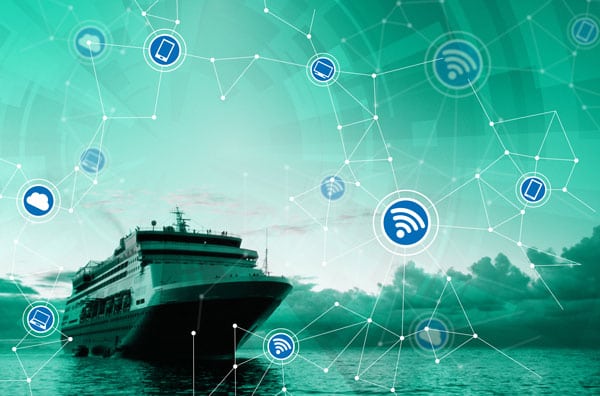Sailing the Seas of Connectivity: In-Transit WiFi Advertising on Ships

Is It Ethical to Collect Data on Your Personal Preferences While Traveling and Surfing the Internet? A Traveler’s Perspective
June 25, 2022
Exploring Inflight Connectivity Trends: Staying Connected Above the Clouds
July 25, 2022
In the vast expanse of the open sea, where connectivity was once a distant dream, ships now sail with the power of the internet at their fingertips. The integration of in-transit WiFi on ships has revolutionized maritime travel, bringing the world closer to passengers aboard. With this evolution comes a unique opportunity for advertisers to engage with a captive audience using in-transit WiFi advertising, turning your mobile device into a portal for an enhanced maritime experience.
The Evolution of Maritime Connectivity
Gone are the days when a journey across the ocean meant disconnecting from the digital world. In today’s maritime landscape, ships equipped with in-transit WiFi provide passengers with a seamless and connected experience. This technological advancement not only ensures that travelers can stay in touch with loved ones but also creates a novel platform for advertisers to reach an engaged and diverse audience.
Navigating the Waves of In-Transit WiFi Advertising:
In-transit WiFi advertising on ships operates in a manner similar to its terrestrial counterpart, offering a unique set of challenges and opportunities. Here’s how it typically works:
- Passenger Connectivity: Passengers on board connect to the ship’s WiFi network, enabling them to access the internet and stay connected during their maritime journey.
- Geo-Location Services: Utilizing geo-location services, the ship’s in-transit WiFi system identifies its position and proximity to ports of call.
- Tailored Notifications: Advertisers leverage this information to push personalized notifications to connected devices, offering promotions, local insights, or exclusive content related to upcoming ports.
Benefits for Passengers:
- Seamless Connectivity: Passengers can enjoy uninterrupted internet access even in the midst of the ocean, facilitating communication and entertainment.
- Local Exploration: Advertisers can provide information about upcoming ports, local attractions, and cultural events, enriching the passenger’s travel experience.
- Exclusive Offers: Travelers receive tailored promotions and discounts from onboard services or local businesses at upcoming ports of call.
Benefits for Advertisers:
- Targeted Marketing: In-transit WiFi advertising allows advertisers to tailor their messages based on the ship’s route, passenger demographics, and interests.
- Brand Engagement: Advertisers can enhance brand engagement by providing exclusive content, such as virtual tours, behind-the-scenes glimpses, or sneak peeks related to their products or services.
- Real-Time Analytics: Advertisers gain access to real-time data, allowing them to measure the effectiveness of their campaigns and make adjustments as needed.
Challenges and Considerations:
Despite the promising opportunities, challenges such as satellite connectivity limitations, user privacy concerns, and the need for unobtrusive advertising methods must be carefully addressed. Respecting passengers’ privacy and obtaining explicit consent are critical aspects of successful in-transit WiFi advertising at sea.
Conclusion:
As ships become floating hubs of connectivity, in-transit WiFi advertising emerges as a powerful tool for enhancing the maritime experience. The marriage of technology and travel is reshaping the way we explore the world, and advertisers setting sail into this new frontier have the chance to create meaningful connections with passengers as they navigate the seas. The future of maritime travel is not just about reaching a destination but enjoying a connected, informative, and personalized journey along the way.